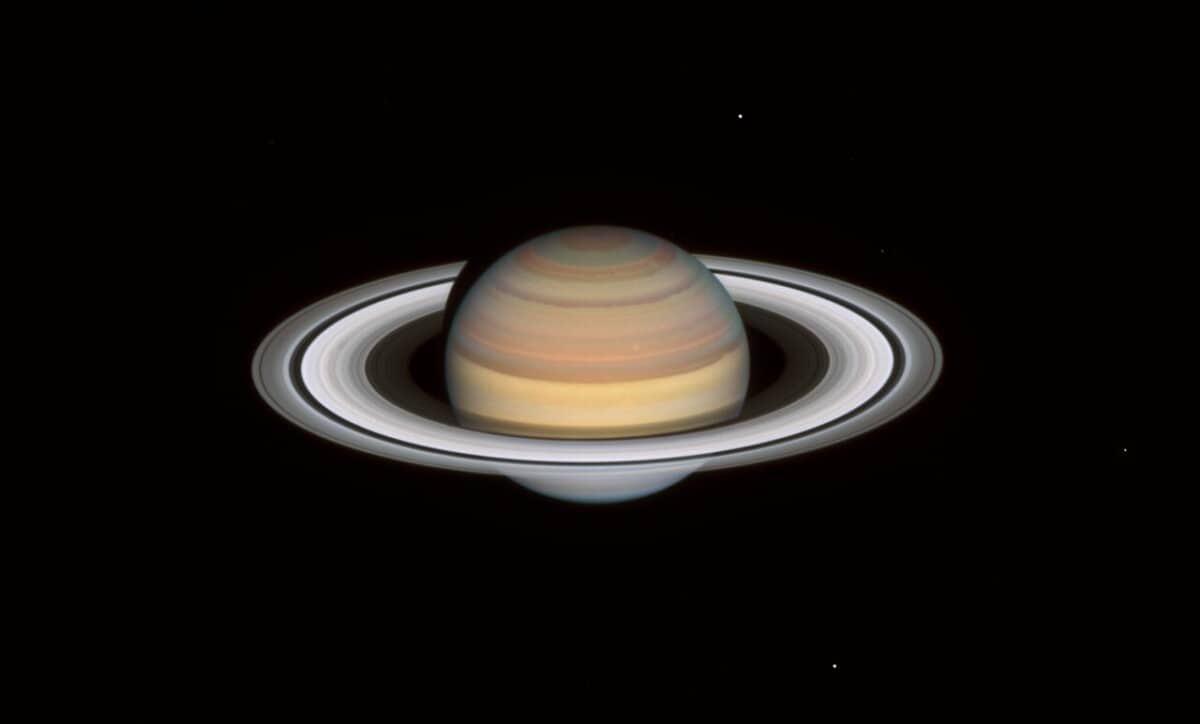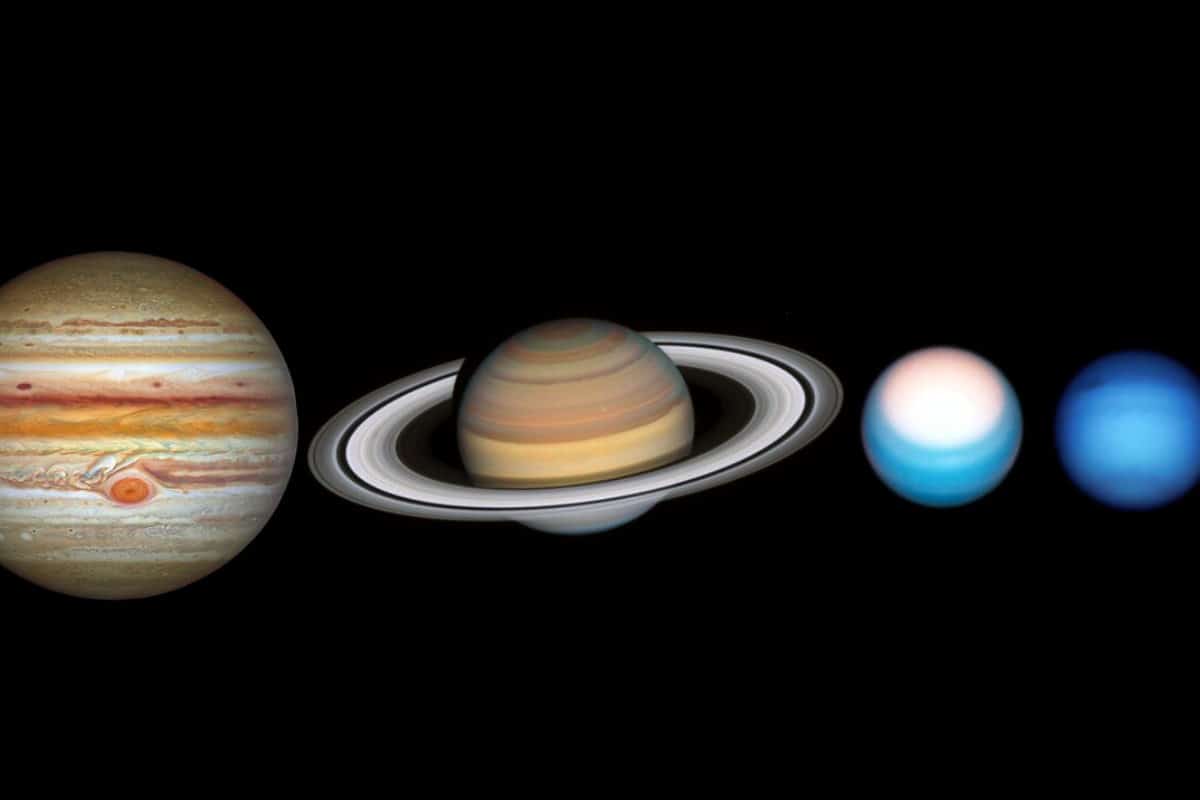That – and more – is evident from new images taken by Hubble of the four largest planets in our solar system.
The Hubble Space Telescope makes a ’round trip’ every year through the outer reaches of our solar system. This is the realm of the giant planets – Jupiter, Saturn, Uranus and Neptune – which extend up to 30 times the distance between the Earth and the Sun. During the tour, Hubble keeps his camera ready. And that once again produces stunning and revealing images.
Changes
Unlike the rocky planets such as Earth and Mars that are close to the sun’s warmth, the planets in the outer reaches of our solar system consist of cold gaseous soups of hydrogen, helium, ammonia and other trace gases, packed around an intense hot and compact core. And that contributes to the fact that their swirling and colorful atmospheres are constantly changing. Every time Hubble points its camera at these worlds, researchers are in for another surprise. The photos often offer new insights into their wild weather, propelled by still largely unknown dynamics that take place beneath the cloud tops.
Jupiter
This year, Jupiter again appears to be in for surprises. The researchers discover that the equator of the gas giant has changed color again. The album can be admired below. You can see how the equatorial zone of the planet has a deep orange hue. And that is quite unusual. While the equator has deviated from its traditional white or beige color for a few years now, scientists were still surprised to see the equator show off in a true ‘orange color’.
Afbeelding: NASA, ESA, A. Simon (Goddard Space Flight Center), and M.H. Wong (University of California, Berkeley) and the OPAL team
–
Also notable are several new storms that have appeared just above the equator. Resembling red blood cells, these elongated storms are cyclonic vortices, each with a different appearance. For example, some are sharp and clear, while others look more blurry. This difference in appearance is caused by certain physical properties in the cloud cover of the vortices.
Saturn
We travel on to neighbor Saturn, which has also undergone a metamorphosis. Watch!

Afbeelding: NASA, ESA, A. Simon (Goddard Space Flight Center), and M.H. Wong (University of California, Berkeley) and the OPAL team
–
The planet’s bands in the northern hemisphere—where it is now autumn—have changed color. It is currently winter in the Southern Hemisphere, which can be seen in the lingering bluish hue of the South Pole.
Uranus
In particular, Hubble’s photo of Uranus highlights the planet’s bright, northern polar cap. It’s springtime in the Northern Hemisphere, and the increase in ultraviolet radiation from the sun seems to be making the Arctic brighter.

Afbeelding: NASA, ESA, A. Simon (Goddard Space Flight Center), and M.H. Wong (University of California, Berkeley) and the OPAL team
–
Why? Researchers owe us the answer. It may be related to a change in the opacity (light transmittance) of atmospheric methane, or a change in aerosols. What is noteworthy, however, is that even as the atmospheric cap brightens, the sharp southern boundary remains at the same latitude. This has been the case for years. Maybe some kind of jet stream is a hard boundary?
Neptune
Finally, Hubble portrays Neptune. The photo shows the now famous ‘dark spot’ – a huge storm that sometimes changes direction -, along with an eclipsed Northern Hemisphere. You can also spot a remarkable, dark, elongated circle, encompassing Neptune’s south pole.

Afbeelding: NASA, ESA, A. Simon (Goddard Space Flight Center), and M.H. Wong (University of California, Berkeley) and the OPAL team.
–
By the way, do you know where that blue color of the ice giant comes from? This hue of both Neptune and Uranus results from the absorption of red light by the methane-rich atmospheres of these two planets, combined with the same Rayleigh scattering effect that turns Earth’s clear skies blue.
All in all, Hubble’s new images reveal both extreme and subtle changes taking place on the largest planets in our solar system. The sharp eye of the space telescope provides new insights into the fascinating and dynamic weather patterns and seasons. In addition, it allows astronomers to investigate the similar and different properties that contribute to their ever-changing atmospheres.
–


